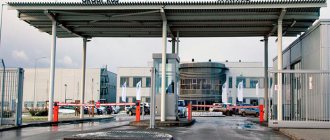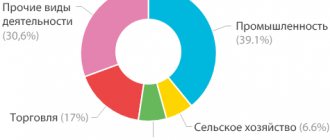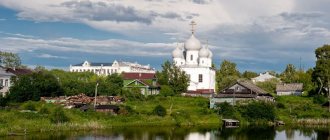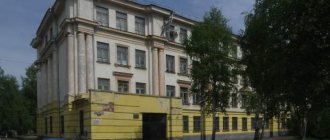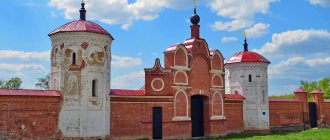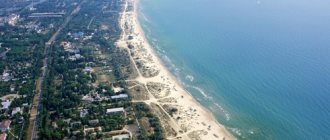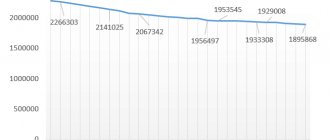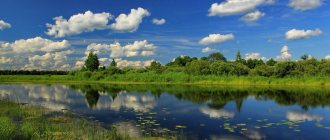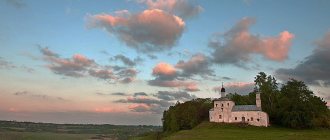The Moscow Region is located on the territory of the Central Federal District of the Russian Federation. If you look at a map of the Moscow region from a satellite, you can determine its location, consider the main natural, industrial and residential facilities, and get an idea of the region’s infrastructure.
The history of settlement on the site of the Moscow region goes back more than 20 thousand years. The flat lands, convenient for livestock farming and arable farming, attracted peasants, and the hills in the northern part made it possible to build fortified settlements.
About 300 large rivers (more than 10 km long) flow through the region. If you enlarge the map of the Moscow region by district, you can see rivers such as:
- Moscow;
- Klyazma;
- Oka;
- Lama;
- Protva;
- Sister;
- Dubna.
Several reservoirs are formed by river basins. The Moscow Canal passes through the region. It passes through several large reservoirs in the region. To view the canal, you can move with the mouse to the northern part of the map of the Moscow region by district.
More than 7 million people live in the region. The number of people living in the region is constantly increasing due to labor migration.
What holiday is it today?
January 22, 2022, Saturday
Today are holidays, events: Day of Unification of Ukraine Tomorrow: Premiere of the opera “Eugene Onegin” at the Bolshoi Theater
Today is the Orthodox holiday: Martyr Polyeuctus. St. Philip, Metropolitan of Moscow and All Russia, wonderworker... Tomorrow: St. Gregory, Bishop of Nyssa. Venerable Markian the presbyter. Venerable Dometian, Bishop of Melitino. St. Paul of Komel, wonderworker, student of St. Sergius of Radonezh. Saint Theophan, the Recluse of Vyshensky...
Today is a national holiday: St. Philip's Day... Tomorrow: Gregory - Summer Guide...
Lytkarino
Go to city page
| Average rental price for 2-room apartment. kv .: 28,000 rub. | Average purchase price of 2-room apartment. kv .: 6,500,000 rub. |
| Nearest metro station: 7 Kotelniki - 14.2 km (17 min. by car) 15 Nekrasovka — 18.1 km (29 min. by car) | Distance to Moscow center: by road - 30 km (53 min.) |
Seasons
Seasons, four periods of the year (spring, summer, autumn and winter) characterized by certain average temperatures. The period during which the Sun passes through one of these sectors is called the season. Spring in the Northern Hemisphere and autumn in the Southern Hemisphere begin when the Sun passes through the initial circle of declination and its right ascension is 0° (vernal equinox). Summer in the Northern Hemisphere and winter in the Southern Hemisphere occur when the sun's right ascension is 90° (summer solstice). Autumn in the Northern Hemisphere and spring in the Southern Hemisphere begin when the sun's right ascension is 180° (autumnal equinox). The beginning of winter in the Northern Hemisphere and summer in the Southern Hemisphere is considered to be the winter solstice, when the direct ascension of the Sun is 270°... Next: Seasons. Russian folk calendar. Monthly words...
Moscow region
The Moscow region (unofficially - Moscow region) is a subject of the Russian Federation, part of the Central Federal District. The administrative center of the Moscow region has not been determined; in fact, it is the city of Moscow; some government bodies are located in Krasnogorsk.
The region is located in the central part of the East European Plain in the basin of the Volga, Oka, Klyazma, and Moscow rivers. It borders in the north-west and north with the Tver region, in the north-east and east - with Vladimir, in the south-east - with Ryazan, in the south - with Tula, in the south-west - with Kaluga, in the west - with Smolensk, in in the center - with the federal city of Moscow. There is also a small northern section of the border with the Yaroslavl region.
The Moscow region was formed on January 14, 1929. Historically, the region was preceded by the Moscow province, formed in 1708. The region was part of the Central Industrial Region, formed during the consolidation of the units of administrative-territorial division of the RSFSR, and on June 3, 1929 it was renamed the Moscow Region.
Administratively, the region consists of 16 districts, 44 cities of regional subordination, 2 urban-type settlements of regional subordination and 5 closed administrative-territorial entities.
The region received its name from the city of Moscow, which, however, is a separate subject of the Russian Federation and is not part of the region. State authorities of the Moscow region are located on the territory of the city of Moscow and the Moscow region. In 2007, most executive authorities were moved to the new Government House of the Moscow Region, located in the city of Krasnogorsk, 350 m from the border with Moscow.
The Moscow region is located within the forest belt (the extreme south of the taiga zone, the zone of coniferous-deciduous and broad-leaved forests) and forest-steppe zones. Forests occupy over 40% of the region's territory; in some areas (mainly in the west, north of the region and in the far east) forest cover exceeds 80%; on the Moskvoretsko-Oka Plain it generally does not exceed 40%; in the southern Zaoksky regions it does not even reach 20%. Most of the region's territory is included in the mixed forest zone. The zone of broad-leaved forests includes territories located south of the Oka, with the exception of the southern part of the Serebryano-Prudsky district, which belongs to the forest-steppe zone. Along the low-lying right bank of the Moscow River, the zone of broad-leaved forests extends far to the north, almost to the borders of the city of Moscow. In the part of the Moskvoretsko-Oka Plain adjacent to the Moscow River, in the Zaoksky regions, as well as north of the Klinsko-Dmitrovskaya ridge, large areas are allocated for agricultural land.
In the very north of the Moscow region (in the territory of the Upper Volga Lowland) and partly in its western part (in the territory of Mozhaisky, Lotoshinsky and Shakhovsky districts), the most common transitional to coniferous-deciduous subnemoral or southern taiga coniferous forests, mainly spruce forests. The forests of Meshchera consist mainly of pine-spruce and pine forests; In the swampy lowlands there are isolated forests of black alder. The central and western parts of the region are occupied by coniferous-deciduous forests. Indigenous coniferous-deciduous forests in the Moscow region do not form a continuous belt, being most fully preserved on the Smolensk-Moscow Upland, especially on the slopes of the Klinsko-Dmitrovskaya ridge. The primary forests of Meshchera are green moss pine forests with a ground cover of blueberries and lingonberries; in waterlogged areas - long-moss pine forests and sphagnum forests. Forests with a complex species composition with a significant admixture of small-leaved and, less commonly, broad-leaved species are common in Meshchera; such forests typically have rich undergrowth and dense grass cover. In addition, within Meshchera, in waterlogged areas, there are tracts of indigenous small-leaved forests (gray and black alder, birch, willow). For the Moskvoretsko-Oka Upland, secondary small-leaved forests are common, while coniferous-deciduous and broad-leaved forests are primary. In the Oka valley between Serpukhov and Kolomna, on the elevated left bank, there are steppe forests.
To the south there is a zone of deciduous forests, represented by oak groves scattered in small spots south of the Oka. The main tree species of the zone, in addition to oak, are linden, Norway maple, Tatarian and field maples, ash and two types of elm, in the undergrowth - hazel, European and warty euonymus, honeysuckle, brittle buckthorn, viburnum and other shrubs. In the floodplains of the rivers there are black alder forests, as well as forests of oak with an admixture of elm; in the Oka valley south of Kolomna there are floodplain meadows. The extreme south of the region (Serebryano-Prudsky district and partly Serpukhov district) are located in the forest-steppe zone; All areas of the steppe on the watersheds have been plowed, they are almost not preserved. Small areas of steppe meadows and meadow steppes are protected here in several reserves on the slopes of the Polosni, Osetra and other rivers. Linden and oak groves are occasionally found within the forest-steppe zone.
Swamps are most common in the Moscow region on the territory of the Upper Volga Lowland and in Meshchera - in the Shatursky and Lukhovitsky (in the east) regions. There are almost no natural floodplain meadows left.
The number of native plant species in the Moscow region is decreasing, but representatives of other flora are becoming more widespread (for example, American maple); Species that came from cultivation also settled in large areas - Sosnovsky's hogweed, common columbine, impatiens glandular, giant goldenrod, etc. Some plant species are listed in the Red Book of Russia (water chestnut, lady's slipper, etc.).
Among the mammals preserved in the Moscow region are the badger, squirrel, beaver, otter, muskrat, ermine, raccoon dog, hedgehog, hares (hare and hare), shrews, weasel, fox, elk, wild boar, roe deer, mole, gray and black rats, forest marten, mice, wood mouse, mink, deer (red, spotted, maral), muskrat, voles, dormouse (hazel dormouse, in the south of the region - garden, forest and wolf), black polecat. Brown bear, lynx, and wolf are occasionally found on the borders of the region. In the south of the region there are spotted ground squirrels, gray hamsters, hamsters, large jerboas, stone martens, and steppe polecats. In some areas there are stable populations of introduced or escaped animals - flying squirrel, American mink, Siberian roe deer. There are also more than a dozen species of bats in the Moscow region.
The avifauna of the region includes more than 170 species. Woodpeckers, blackbirds, hazel grouse, bullfinches, nightingales, corncrakes, lapwings, gray herons, gulls, grebes, ducks (especially mallards) are found in large numbers; There are also white storks and burnt storks. Sparrows, magpies, crows and other typical representatives of the avifauna of central Russia are numerous. Over forty species are classified as game species and are caught annually.
The reservoirs of the region are rich in fish (common ruff, crucian carp, carp, bream, perch, roach, rotan, pike perch, pike, burbot). Insects are numerous (there are more than 300 species of bees alone).
The Moscow region is home to 6 species of reptiles - lizards (fragile spindle, viviparous lizard, sand lizard) and snakes (common viper, common snake, in the south of the region - copperhead), there is information about the existence of small populations of marsh turtles in certain areas. Amphibians are represented by 11 species - newts (common and crested), toads (gray and green), 5 species of frogs, common spadefoot, red-bellied toad.
On the territory of the Moscow region, in the Serpukhov district, there is the Prioksko-Terrasny Biosphere Reserve (the bison and one of the northernmost populations of steppe plants are protected). Other protected areas of federal significance located in the region include the Zavidovo National Park (partially located within the Tver region), the Ivanteevsky Dendrological Park named after A. S. Yablokov, the natural monument “Lake Kiyovo”, the botanical garden of the All-Russian Institute of Medicinal Plants . In total, there are over two hundred protected areas in the Moscow region.
Folk calendar about every day
Every day one season always replaces another and this determines a person’s way of life. In connection with this, a folk calendar was formed in which there were practically no nameless, unmarked days. Every day was special, had its own purpose. All this was determined by climate conditions and astrological phenomena.
A calendar is a system for counting periods of time. The first calendars arose a long time ago, in ancient times, because there was a need to measure time. The word calendar comes from the Latin words caleo - to proclaim and calendarium - debt book. This is due to the fact that in Ancient Rome the beginning of each month was especially proclaimed, and because it was customary to pay debts on the first day of the month. Different peoples counted time differently. Some calendars are based on the changing phases of the moon - lunar calendars; in others - the change of seasons - sunny; in others, the length of the year was coordinated with the change of seasons, and the counting of months was associated with the phases of the Moon. Such calendars are called lunisolar.
In Rus', the calendar was called a monthly calendar. Every day, the month book covered the entire year of peasant life, “describing” day by day, month after month, where each day had its own holidays or weekdays, customs and superstitions, traditions and rituals, natural signs and phenomena. The cyclical nature of the calendar is reminiscent of human life, where spring is youth, summer is heyday, autumn is the time of harvesting fruits (it’s good if there are some, otherwise you can live your life without collecting fruits), winter is the time of wisdom and peace. This cyclicality and rhythm determined the way of life of the farmer. The folk calendar was an agricultural calendar, which was reflected in the names of the months, folk signs, rituals and customs. Even the determination of the timing and duration of the seasons is associated with real climatic conditions. Hence the discrepancy between the names of the months in different areas... Next: Folk calendar...
Main socio-economic indicators
We looked at how large the area of the Moscow region is in hectares. It makes up 0.3% of the territory of the Russian Federation. Now we can move on to other socio-economic indicators. The average annual number of employed people in the Moscow region is 3.041 million people. They receive an average of 34,947 rubles per month. Moreover, per capita expenses are about 24 thousand. The average nominal salary per month in the Moscow region according to 2015 data is 38,598 rubles.
In terms of gross regional product, the subject is in second place in the country. In 2014 it amounted to 2.7 trillion rubles. This is about 400 thousand per capita. The service sector provides more than half of the gross regional product. The structure of GRP of the Moscow region is as follows:
- Energy – 4.9%.
- Manufacturing industry – 25.5%.
- Service sector – 52.9%.
The region has significant investment potential. It is in third place in terms of the number of organizations that have foreign capital. An important feature of the geographical location of the region is its proximity to the capital of Russia. The proximity of the latter contributes to the development of the region and makes it attractive for migration. Sometimes he even takes over the capital's labor resources. There is a budget deficit in the Moscow region. The main source of income is taxes. The waste includes social payments, in particular for education and health care. In terms of industrial volume, the region is in second place, right after the capital. The leading industries are food, mechanical engineering, chemical and metallurgy.
Fishing calendar for every day
The fishing calendar should not be taken as an absolutely indisputable truth. Fish biting is greatly influenced by a whole range of natural factors, as well as the influence on the nature of man himself. You must not forget that the fish’s bite depends and is determined not only by the calendar dates and biological cycles of their life, reflected in the calendar, but also, no less, by the state of their habitat; the bite also depends on weather conditions: air and water temperatures, cloudiness, wind direction and strength, etc... Next: Fishing calendar...
Content
- 1 Geography
- 2 Population
- 3 Economy 3.1 Industry
- 3.2 Agriculture
- 3.3 Construction
- 3.4 Transport
- 3.5 Tourism
- 3.6 Foreign economic relations
- 3.7 Small business
- 3.8 Natural resources
- 14.1 Transport 14.1.1 Roads
- 15.1 Regional government
Orthodox calendar about every day
Orthodox calendar: Orthodox, Church and Christian holidays.
The church year is an alternation of weekdays and holidays. On weekdays, a person is called to work “by the sweat of his brow to earn his bread.” Holidays are given in order to feel liberation, to rise above the bustle and routine of the world, to feel involved in the highest of worlds, “where there are no illnesses, sorrows and sighs, but endless life.” Since ancient times, holiday cycles have been associated with the seasons. The pagans associated them with the worship of the forces of nature, the cult of which in the Old Testament was replaced by gratitude to the Creator for the universe. And although the connection between holidays and the seasons has not completely lost its power, since God is present in everything, in the plant and animal world, in human works, it nevertheless faded into the background, giving way to a spiritual foundation built on the Sacred Scriptures. The history of Orthodox holidays dates back to the times of the Old Testament. Each of the Orthodox holidays is dedicated to the remembrance of the most important events in the life of Jesus Christ and the Mother of God, as well as the memory of saints... Next: Orthodox calendar...
Uzbeks
Bukhara, Kokand, Tashkent and Samarkand merchants with trade caravans and embassies came to Muscovy for a long time, but a full-fledged Uzbek diaspora in the Moscow region began to form later, in the 16th-17th centuries. Several Uzbek embassies visited Peter I and Catherine II at different times and received the highest permission to trade in our country. In the 19th century Among the ethnic Uzbek community of the capital and its suburbs, merchants Ibragimjan Akhundzhandov from Kokand, Abdul-Karimbay Safarov from Bukhara, mullah-clergymen Mirgulyam Naqshbandi and Salif Dusmametov, and the rich and numerous Khoshalov family became famous.
After the 1917 revolution, quite a lot of ethnic Uzbeks lived in the Moscow region; for the first time in the capital, the Bukhara House of Education, which was very important for the diaspora, was opened with a large number of language and general education courses, and an Uzbek theater studio. Many Uzbeks fought on the fronts of the Second World War, after the war they settled in the Moscow region, in the places where they fought and treated their wounds. Uzbeks studied in prestigious educational institutions, they subsequently became prominent and recognizable members of the intelligentsia of the national diaspora. The number of Uzbeks coming to the Moscow region has increased significantly after the collapse of the USSR. Today, 25,773 ethnic Uzbeks live in the Moscow region, which is 0.36% of the local population.
Russian folk calendar for every day
The word “sign” comes from the word “notice”, i.e. observe. As a result of observing what happens around a person every day, he accumulates life experience. This knowledge was passed down from generation to generation, carefully preserved and people trusted it as a sacred book. Many signs have come to us from the depths of centuries without losing their knowledge. Each of us is free to choose: to dismiss all this as an absurd superstition or to take a closer look at the signs and take the centuries-old experience of generations more seriously. Most of us, when taking exams, ask them to scold them, boasting about some kind of good fortune or luck, spit so as not to jinx them or knock on wood, take a detour if a black cat crossed the road, are afraid of the number 13 and much more. And who among us does not have lucky things, numbers? Who has never resorted to the help of fate at least once in their life, who has not believed in secrets? It’s as if everything connected with signs is hidden somewhere deep in our subconscious. Often we remember them mechanically, unconsciously, or just as a joke. But, undoubtedly, the signs contain a lot of accurate knowledge and practical wisdom of our ancestors. They cover all the characteristic, often difficult to perceive, natural phenomena. Signs have preserved a lot of what was in old folk holidays and customs; they help predict the weather, grow crops... Next: Folk signs...
Capital
When you compare the area of Moscow and the Moscow region, as well as the size of their population, the uneven distribution of residents of the Russian Federation immediately becomes clear. On average, there are 4,832 people per square kilometer in the capital. According to official data, almost 13 million people live in Moscow. This is the first place among the constituent entities of the Russian Federation. The Moscow region is in second place for this indicator. About 7 million people live there. Moreover, the area of the Moscow region is almost 20 times larger than the capital.
Both subjects of the Russian Federation are attractive for migration. The population of the Moscow agglomeration exceeds 15 million people. As for the national composition of the capital’s residents, according to official statistics, 91% of the total number are Russian. However, there is other data. If we take into account illegal immigrants, then the population of Moscow is already predominantly Muslim. The capital of the Russian Federation is the largest financial center. It is also a center of mechanical engineering, chemical and light industry, as well as metallurgy. Cultivated areas occupy 15.1 hectares of the total territory, 1/8 of which is planted with grains and legumes.
Holiday calendar, dates and events of the year
All state and professional holidays in Russia, including significant World and International holidays, and other equally interesting holidays and events about every day.
The holiday has always kept pace with the history of mankind. Social time can be divided into three types: everyday life (weekdays), weekends and holidays. Everyday life is a series of practices repeated day after day and every day (work). Weekends are regular breaks from the rush of everyday life. It is believed that on weekends a person should restore his strength after working days. Day off, non-working day. A holiday is a day of celebration established in honor or in memory of someone or something. A day or series of days celebrated by the church in memory of a religious event or saint... Next: Calendar...
Armenians
A fairly large diaspora in the Moscow region belongs to ethnic Armenians; representatives of this Transcaucasian ethnic group appeared here eight centuries ago. Currently, 63,306 natives of Armenia live in cities near Moscow, which amounted to 0.89% of the number of local residents. Some Russian chronicles of the 14th century. mention Armenian merchants who traded in the capital and its suburbs. Armenians, as fellow Christians, skilled gunsmiths and talented jewelers, valiant officers and competent doctors, entered Russian society in the Moscow region on equal terms, married Russian girls, and became local residents.
When, in relation to Christians of Armenian origin, the notorious “Armenian question” was resolved in 1915 by the Muslim sultans of the Ottoman Empire through outright genocide, many Armenians moved to central Russia and the Moscow region in order to save their families. In Soviet times, highly qualified specialists from Armenia came to enterprises near Moscow, settled and settled here. The migration flow of Armenians to the Moscow region increased during perestroika, with the collapse of the USSR, in 1990-2000. Armenians of the Moscow region are united in public organizations that help maintain their ethnic identity far from their homeland. “Days of Armenia in the Moscow Region”, folklore festivals and fun national holidays are regularly held.
Prayer book, Orthodox prayers for every day
Prayer is the most powerful means for healing all illnesses - both physical and mental. Prayers can be laudatory or grateful, petitionary and repentant. If we have offended God, sinned, we must ask Him for forgiveness, that is, repent. Such prayers are called repentant prayers. If everything is fine with us, if we and our loved ones are healthy and prosperous, if we have a place to live, something to wear, something to eat, we must glorify and thank God for this. Such prayers are called praise or thanksgiving. If some misfortune, illness, trouble or need happens, you need to ask God for help. Such prayers are called petitionary... Next: Orthodox prayers...
Tatars
From the 14th century, and according to some sources even earlier, people from the lands of Volga Bulgaria and the vast steppe possessions of the Golden Horde began to appear in the capital and Moscow region. They settled mainly in the spacious Zamoskvorechye, in the compactly located “Tatar foreign settlement”, built large wealthy houses, surrounded by dense fences, and raised livestock. Peaceful and very hardworking, they quickly fit into the Moscow region community, bringing with them a special oriental nomadic and merchant flavor. Some people from the Volga region converted to Orthodoxy and quickly assimilated with the Russian indigenous population of the Moscow region, some lived separately according to their ancient Muslim traditions. Tatar practical clothing took root well among the Russians; they happily wore caftans and zipuns, army jackets and bashlyks.
Merchants from the Golden Horde and Volga Bulgaria walked along the waterways of central Rus'; they understood their caravans with grain for the Russians along the Volga. They walked selling grain and buying furs along the Klyazma, the deep Oka and the Moscow River. They married their daughters to Russian princes and boyars, merchants and famous artisans. The modern Tatar diaspora of the Moscow region consists of indigenous, already local residents with ancestors who came from the Volga lands and the Great Steppe. Today, 56,202 ethnic Tatars live in the Moscow region, which is 0.79% of the total population. The Tatars of the Moscow region are united in ethnic public organizations, honor Muslim traditions, and organize folk festivals and national holidays.
Zodiac, astrological, eastern calendar. Zodiac signs
In ancient times, to establish the calendar, priests used knowledge of the positions of all the planets. Before the reform of Peter 1, the New Year was celebrated on the Day of the Autumn Equinox. On this day, according to ancient legend, the most peaceful treaty was concluded between the Great Race (ancient Slavs) and the Great Dragon (ancient Chinese) and it was approximately 7518 years ago... For the ancient Slavs, the calendar month corresponded to the lunar cycle from new moon to new moon, taking into account such Thus, the relationship of the entire annual cycle with astronomical and natural phenomena. There was no coherent calendar system. The main natural phenomena are still considered to this day to be the days of the solar equinox and solstice - the Slavic holidays Maslenitsa, Kupala, Ovsen and Kolyada. But during the time of Peter 1, all ancient Slavic calendars were abolished and a new Western European calendar from the Nativity of Christ (Julian calendar) was introduced, while the beginning of the calendar was moved to January 1. The Julian calendar (old style) did not take leap days into account and accumulated one extra day every 128 years. After the October Revolution in 1918, the Gregorian calendar (new style) was introduced in Russia, according to which an amendment of 13 days was introduced. The calendar of the ancient Slavs was based on two planets: the Sun and the Moon. And now they don’t use anything at all. The calendar has become static. There is no such thing as the calendar, it turns out, resting on some planet. Nobody even knows about it. There are just some standard numbers, there are months and holidays. The calendar is based on the Sun and Moon. Why is this so? Because these two luminaries influence the Earth. The Earth revolves around the Sun, and the Moon revolves around the Earth. And these two luminaries create the atmosphere on the planet. From here the calendar is built... Next: Astrological calendar...
Closed education
The administrative-territorial structure of the Moscow region includes Krasnoznamensk, Vlasikha, Voskhod, Star City and Molodezhny. All of them, except the first one, are urban-type settlements (urban-type settlements). The largest of them in terms of territory is Voskhod. Its area is 15.95 square kilometers. The smallest is Star City. Its area is only 3.1 square meters. km. At the same time, Krasnoznamensk is in first place in terms of population. It is home to 40 thousand people. The population of the town of Voskhod is about 2000 people.
Dream books online, interpretation of dreams
A dream book is nothing more than an interpreter of dreams and dreams, a translator of dreams. Since ancient times, people have been using dream books; dreams have always been given great importance, and people have often noticed the prophetic properties of some dreams. The dream book can become your faithful assistant every day and throughout your life, thanks to the dream interpreter you can always make the right decisions, the dream book will help you resist temptations in time, and will warn you against wrong steps and frivolous actions. Further…
Lobnya
Go to city page
| Average rental price for 2-room apartment. kv .: 28,000 rub. | Average purchase price of 2-room apartment. kv .: 6,083,030 rub. |
| Nearest metro station: 9 Altufyevo - 15.5 km (20 minutes by car), 10 Seligerskaya - 31 km (40 min. by car) | Distance to Moscow center: by road - 40 km (56 min.) |
Reutov
Go to city page
| Average rental price for 2-room apartment. kv .: 40,000 rub. | Average purchase price of 2-room apartment. kv .: RUB 9,900,000 |
| Nearest metro station: 8 Novokosino (on the city border) | Distance to Moscow center: by road - 14.9 km (30 min.) |
List of subjects of the Central Federal District:
| Subject | Center | Population million people | Area sq.km |
| Moscow | 12,3 | 2511 | |
| Ivanovo region | Ivanovo | 1,023 | 21437 |
| Lipetsk region | Lipetsk | 1,156 | 24047 |
| Oryol Region | Eagle | 0,755 | 24652 |
| Tula region | Tula | 1,49 | 25679 |
| Belgorod region | Belgorod | 1,55 | 27134 |
| Vladimir region | Vladimir | 1,39 | 29084 |
| Kaluga region | Kaluga | 1,016 | 29777 |
| Kursk region | Kursk | 1,123 | 29997 |
| Tambov Region | Tambov | 1,039 | 34462 |
| Bryansk region | Bryansk | 1,22 | 34857 |
| Yaroslavl region | Yaroslavl | 1,27 | 36177 |
| Ryazan Oblast | Ryazan | 1,12 | 39605 |
| Moscow region | Moscow | 7,43 | 44379 |
| Smolensk region | Smolensk | 0,95 | 49779 |
| Voronezh region | Voronezh | 2,3 | 52216 |
| Kostroma region | Kostroma | 0,65 | 60211 |
| Tver region | Tver | 1,3 | 84201 |
Mytishchi
Go to city page
| Average rental price for 2-room apartment. kv .: 30,000 rub. | Average purchase price of 2-room apartment. kv .: 7,900,000 rub. |
| Nearest metro station: 6 Medvedkovo 2 km (8 min. by car) | Distance to Moscow center: by road - 21 km (26 min.) |
Odintsovo
Go to city page
| Average rental price for 2-room apartment. kv .: 35,000 rub. | Average purchase price of 2-room apartment. kv .: RUB 8,900,000 |
| Nearest metro station: 3 Molodezhnaya – 20 km (18 min. by car) 8A Borovskoe highway - 13.6 km (28 minutes by car) | Distance to Moscow center: by road - 21.6 km (28 min.) |
Lyubertsy
Go to city page
| Average rental price for 2-room apartment. kv .: 33,000 rub. | Average purchase price of 2-room apartment. kv .: RUB 7,600,000 |
| Nearest metro station: 7 Kotelniki - 1 km (1 min. by car), as well as the 7th line include: Art. M. Zhulebino and Art. m. Lermontovsky Prospekt (they are located on the border with the city) 15 Nekrasovka - 1 km (1 min by car), as well as line 15 include: Art. metro station Lukhmanovskaya, metro station st. Dmitrievsky, Art. m. Kosino (they are located on the border with the city) | Distance to Moscow center: by road - 16.9 km (32 min.) |
